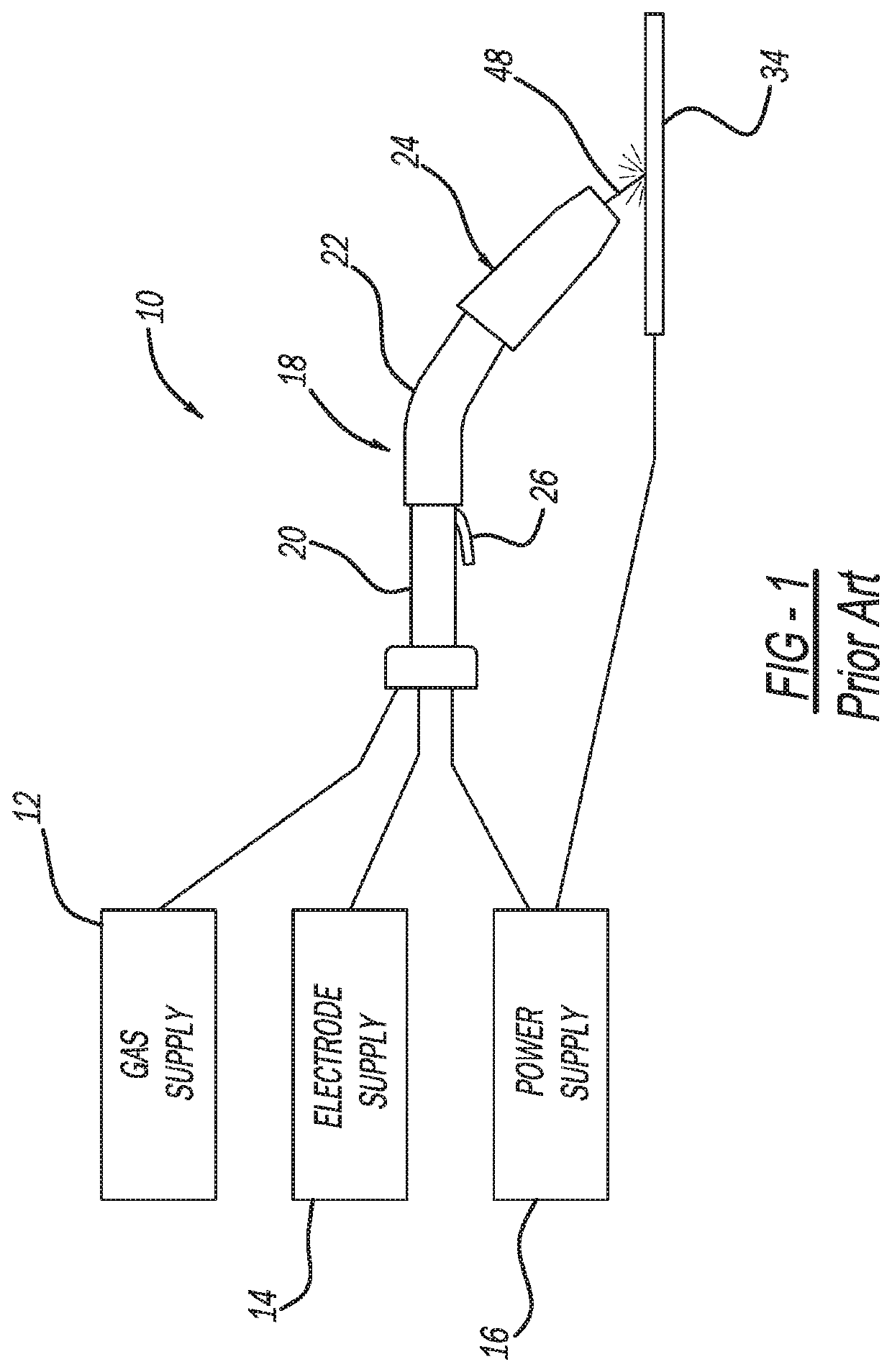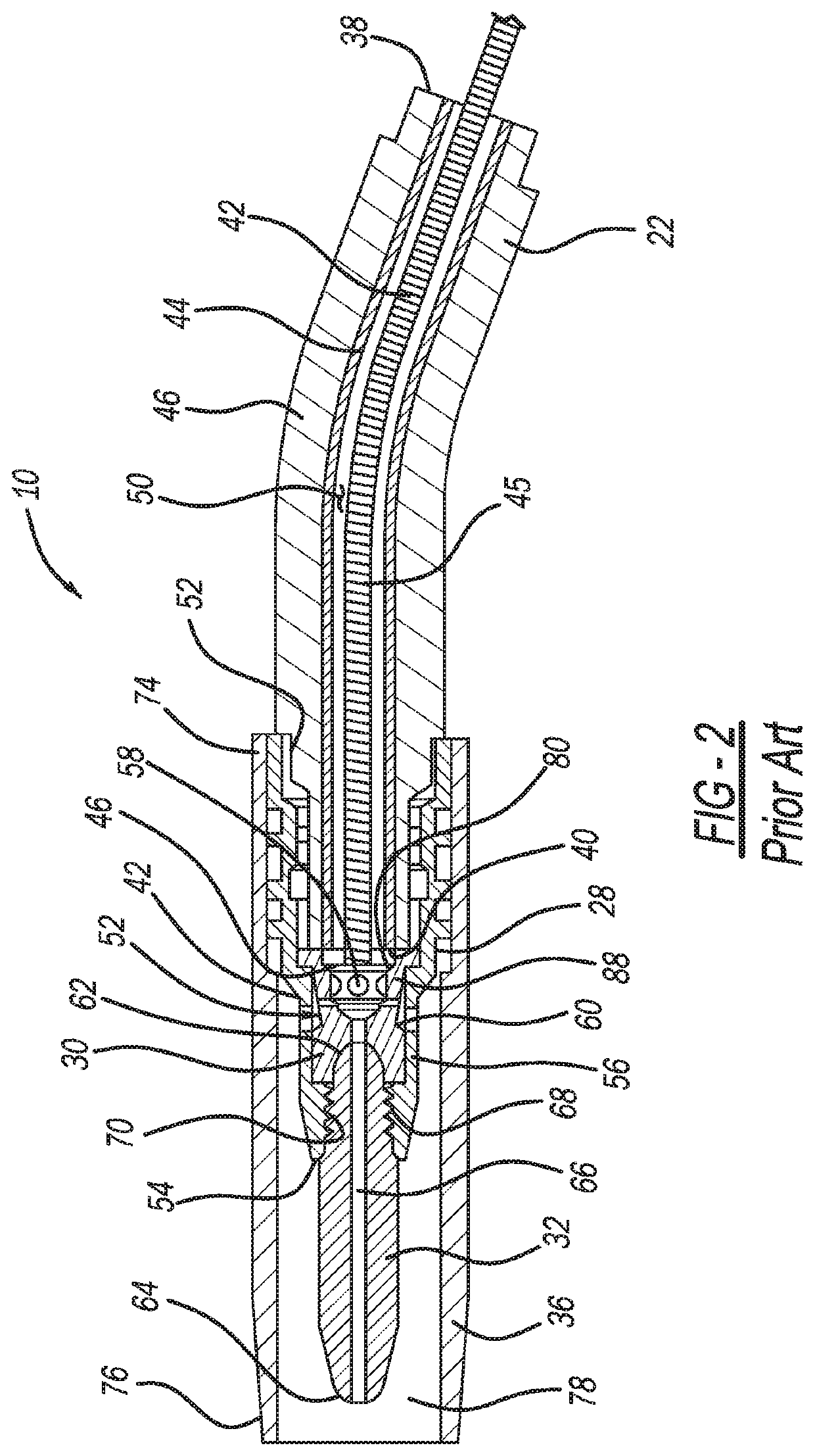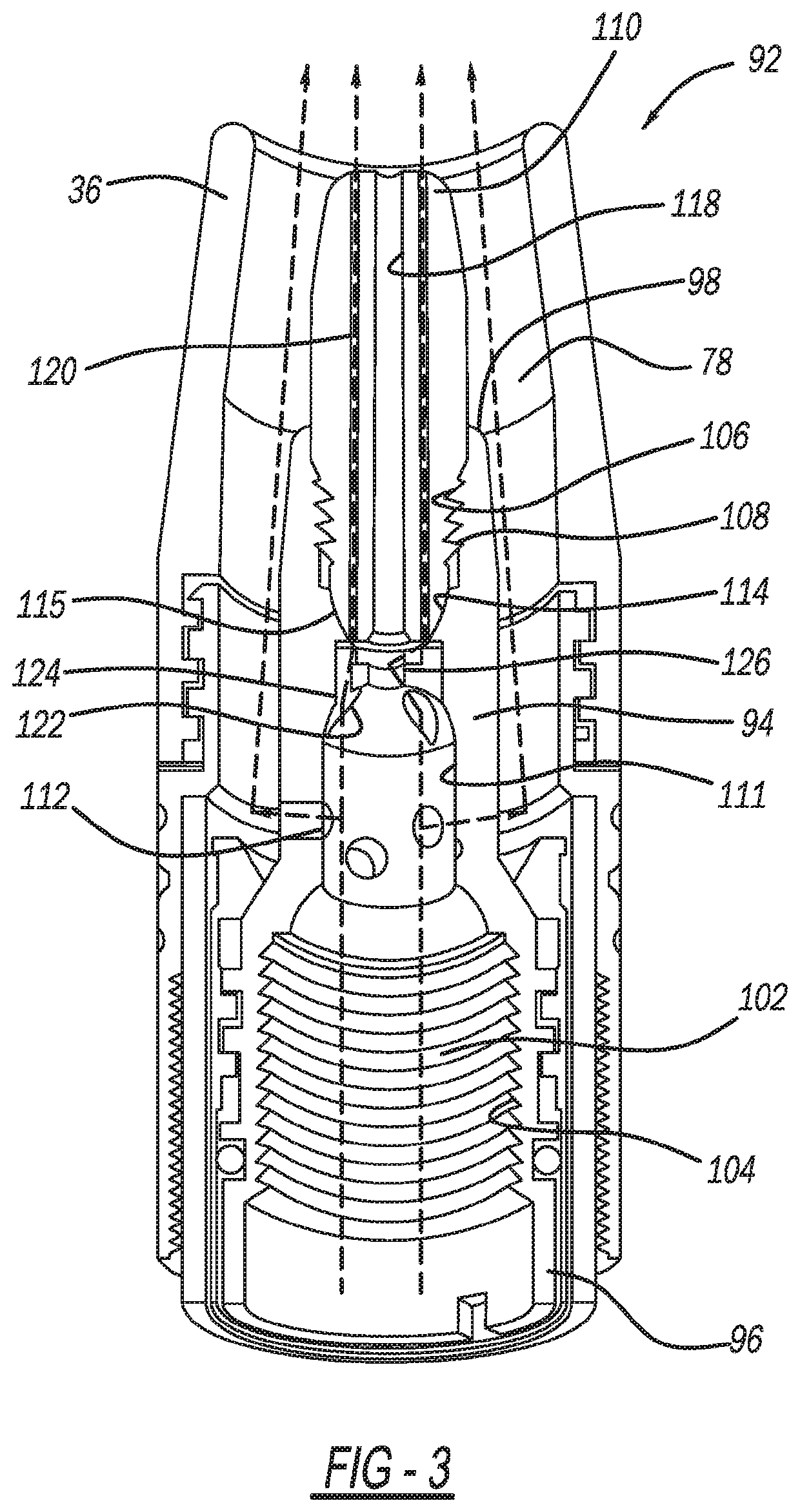End assembly for welding device
a technology for welding devices and end assemblies, applied in shielding devices, shielding gas supply/evacuation devices, support devices, etc., can solve problems such as welding puddles, and achieve the effect of improving shielding and cooling of welding tips
- Summary
- Abstract
- Description
- Claims
- Application Information
AI Technical Summary
Benefits of technology
Problems solved by technology
Method used
Image
Examples
second embodiment
[0028]Now with reference to FIGS. 7, 8 and 9, an end assembly is shown, here designated by reference number 136. End assembly 136 utilizes diffuser body 94 identical to the prior embodiment. Differences in end assembly 136 relate to the configuration of contact tip 138. In this case, contact tip does not feature the parallel gas flow passages 120. Instead central nozzle bore 140 features an initial larger diameter section 142 and a distal section 144. Bore section 142 as a diameter substantially larger than the outside diameter of electrode 48 providing an annular space for the flow of shielding gas. However, distal bore section 144 closely conforms to the outside surface shape of the associated electrode 48 and provides electrical and thermal contact with the electrode. At the intersection of bore sections 142 and 144 a series of cross bores 146 are provided. In a preferred embodiment cross bores 146 are perpendicular to the longitudinal axis of the nozzle and a pair are provided w...
first embodiment
[0030]FIG. 7 shows and assembly 36 with wire guide 45 installed. As shown wire guide 45 is seated against the end surface of blind bore 122. This configuration would also be used in end assembly 92. As shown, bore 111 has a larger diameter than the outside diameter of wire guide 45. Also, where wire guide 45 abuts the blind end of bore 111, bores 124 are positioned outside the outer diameter of the wire guide providing for the flow path of shielding gas into chamber 128.
[0031]FIG. 8 shows in drawn lines the flow of shielding gas through and assembly 136. As shown, shielding gas is initially provided to the inside bore 111 of diffuser body 94. A portion of the gas flow flows radially out of bores 112. Another portion of the flow travels toward tip 138, flowing through offset bores 124 into chamber 128 and into the radial clearance provided between the enlarged bore section 142 and electrode 48. This flow travels along contact tip 138 until it reaches the point of intersection with cr...
PUM
| Property | Measurement | Unit |
|---|---|---|
| outer diameter | aaaaa | aaaaa |
| bore diameter | aaaaa | aaaaa |
| current | aaaaa | aaaaa |
Abstract
Description
Claims
Application Information
 Login to View More
Login to View More - R&D
- Intellectual Property
- Life Sciences
- Materials
- Tech Scout
- Unparalleled Data Quality
- Higher Quality Content
- 60% Fewer Hallucinations
Browse by: Latest US Patents, China's latest patents, Technical Efficacy Thesaurus, Application Domain, Technology Topic, Popular Technical Reports.
© 2025 PatSnap. All rights reserved.Legal|Privacy policy|Modern Slavery Act Transparency Statement|Sitemap|About US| Contact US: help@patsnap.com



